- Dabbling ducks like the Mallard or Garganey
- Diving ducks such as the Pochard or Scaup
- Sea ducks like the Velvet Scoter or Red-breasted Merganser
We know that ducks are more than adept in body of water, but can ducks fly ? Many species of ducks are excellent flyers, particularly whilst migrating. Whilst all ducks have the ability to fly, certain species are unable or choose not to. For instance, the Falkland Steamerduck is almost flightless, only performing short-distance flights within the Falkland Islands. Factors that play a part in their inability to take to the air include their size, weight, wing structure, condition, and environment.
There ‘s batch of concern facts and information about the flight of our quacky friends below.
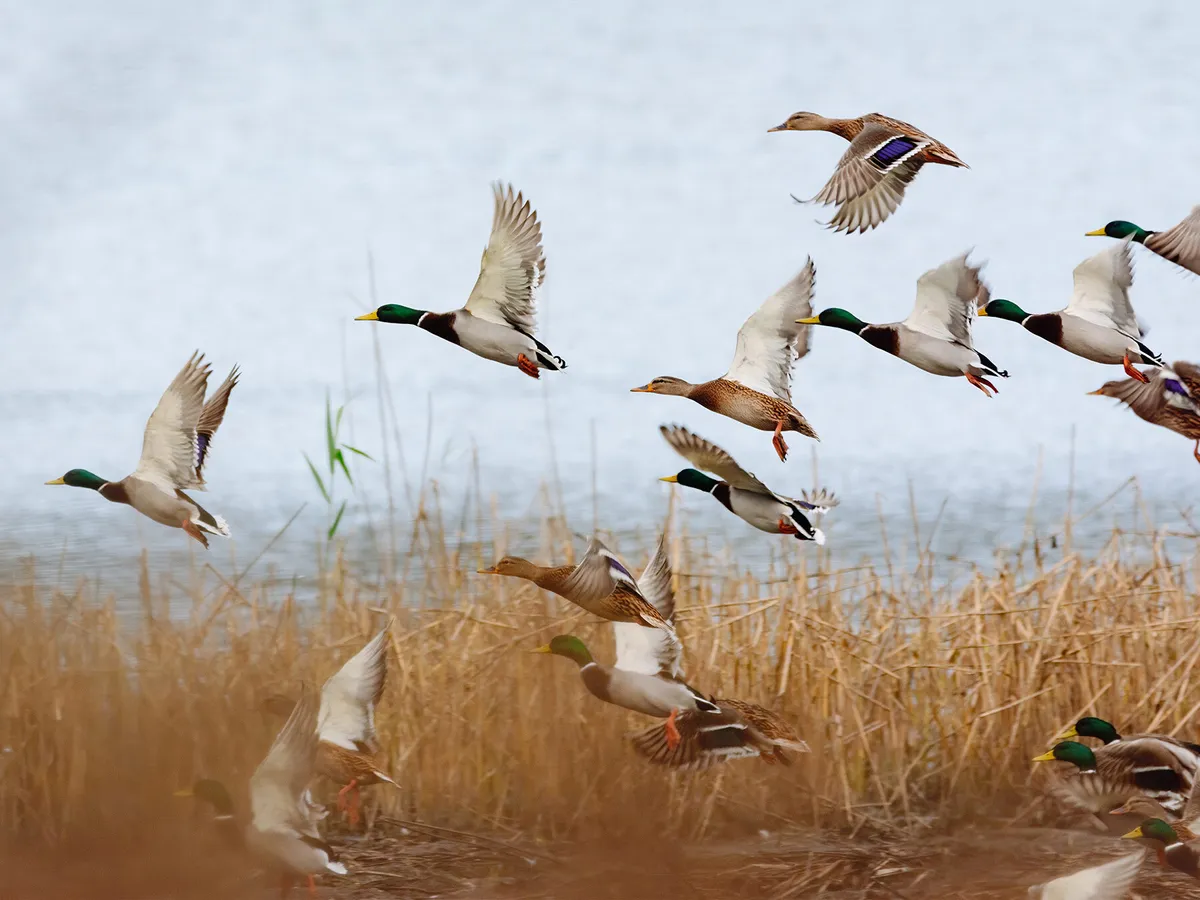
A group of Mallard ducks flying over a lake
How do ducks fly?
Ducks, in general, have curved point wings, with some species having relatively small wings compared to their body size. Ducks can travel long distances, in particular, during migration. To keep their bodies airborne, they have to flap about continuously careless of their annex size. The majority of migrant ducks have mighty fly muscles. Coupled together with their long chief trajectory feathers ( providing thrust whilst flapping ) and shorter secondary flight feathers ( providing lift when gliding ), all aid for effective flight along with the bird ‘s fender coverts. The coverts are softer than the flight feathers and create a stiff, smooth airfoil to allow for optimum airflow whilst the tail feathers act as a rudder helping to control and stabilise flight. During the molt season, ducks lose their flight feathers, with some species ineffective to fly for three to four weeks. Examples of domestic ducks that are unable to fly are :
- Indian Runner Duck
- Pekin Duck
- Rouen Duck
- Cayuga Duck
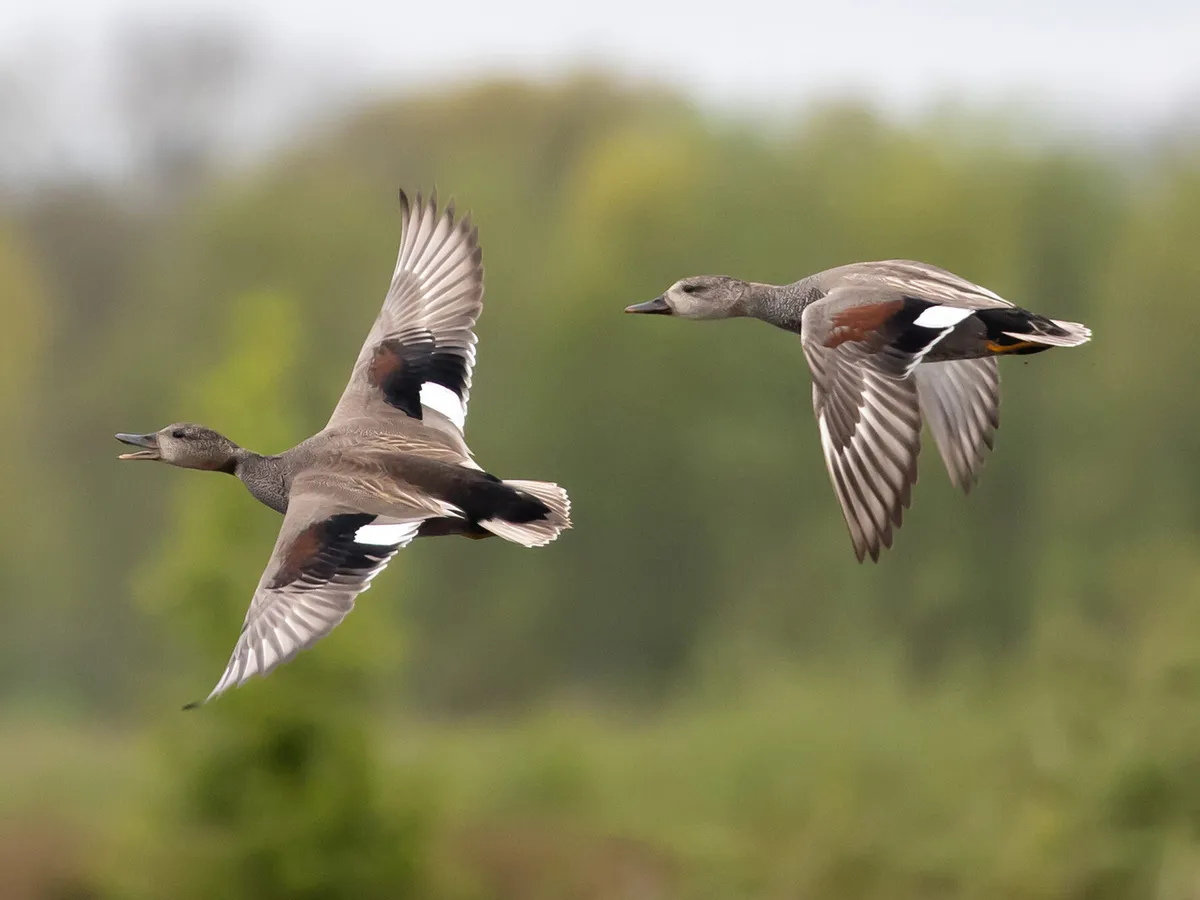
A pair of Northern Pintail ducks in flight together
Why do ducks fly?
The choose habitats of ducks are the like as any aquatic bird, such as rivers, ponds, lakes, overt seas, fresh water marshes, and bays. so, why do ducks leave these areas and take to the flip ? Ducks are found in every continent of the populace, apart from Antarctica. As ducks can not survive freezing temperatures, many migrant species leave their usual habitats. They navigate to spend the winter in strong climates where the food provision is plentiful, and the water rarely freezes. Some species migrate to their reproduction grounds. For case, Mallard ducks in their mated pairs migrate to the northerly parts of their rate to build their nest. The male shuttlecock will broadly leave the breed area to join other males in moulting grounds once the female has laid her eggs .
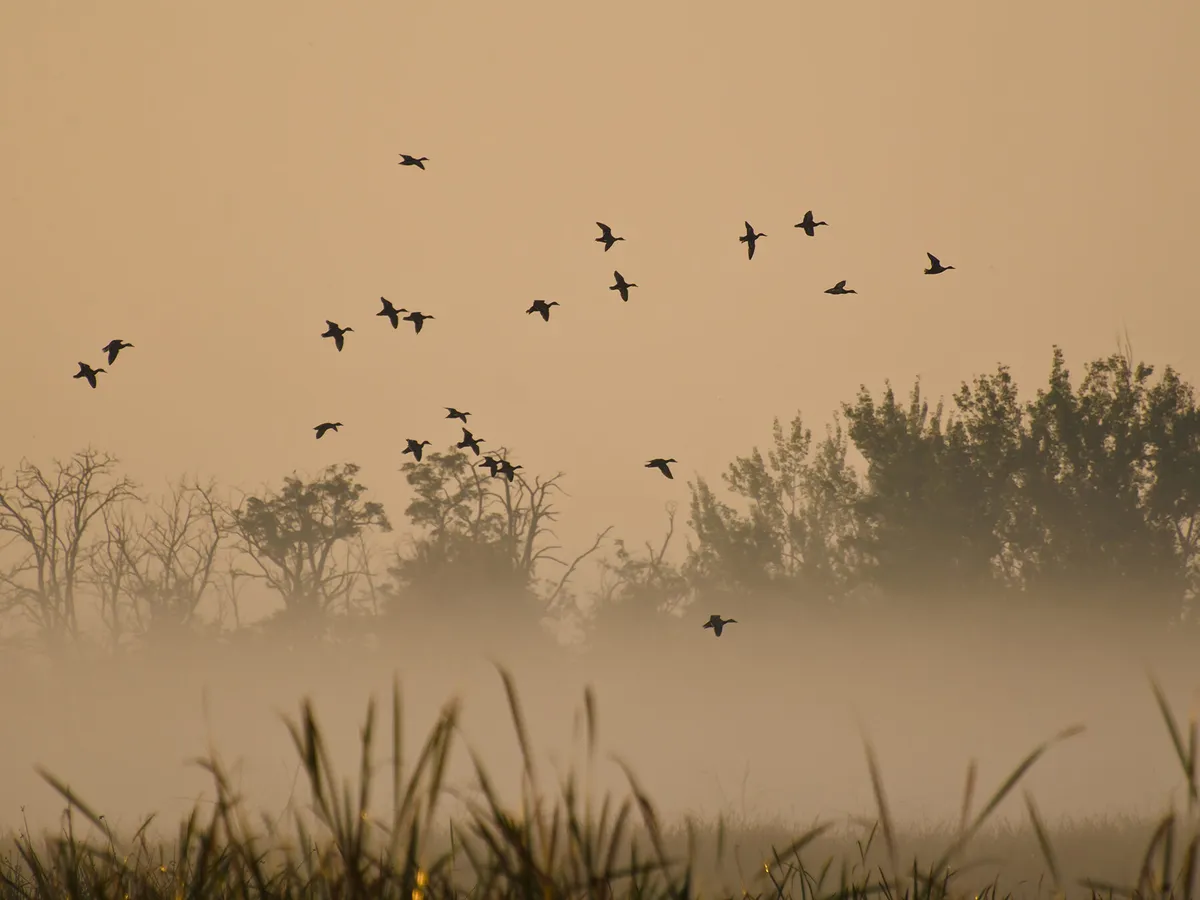
A group of ducks flying early in the dawn over the obscure
How high can ducks fly?
During migration, ducks will typically fly at much greater altitudes to avoid overheating and dehydration. Heights of up to 22,000 feet during migration are not uncommon for certain species including mallards and ruddy shelducks. Most birds fly below heights of 500 feet to save energy and stay clear of danger, including any predators such as hawks. An exhibition to Everest found a skeleton of a pintail at 16,400 feet, whilst software documentation shows that a jet plane flying over Nevada struck a Mallard at 21,000 feet. Hence, records like these confirm that some species can reach a great stature. The Mallard duck ( Anas platyrhynchos ) is a impregnable circular that by and large flies below 10,000 feet but, during migration, will fly at altitudes anywhere between 200 to 4,000 feet. Ruddy Shelducks ( Tadorna ferruginea ) are good fliers, have a potent wing exhaust and fly at heights of over 17,000 feet. however, researchers have discovered that they can reach altitudes of up to 22,000 feet ( 6,800 metres ) during migration .
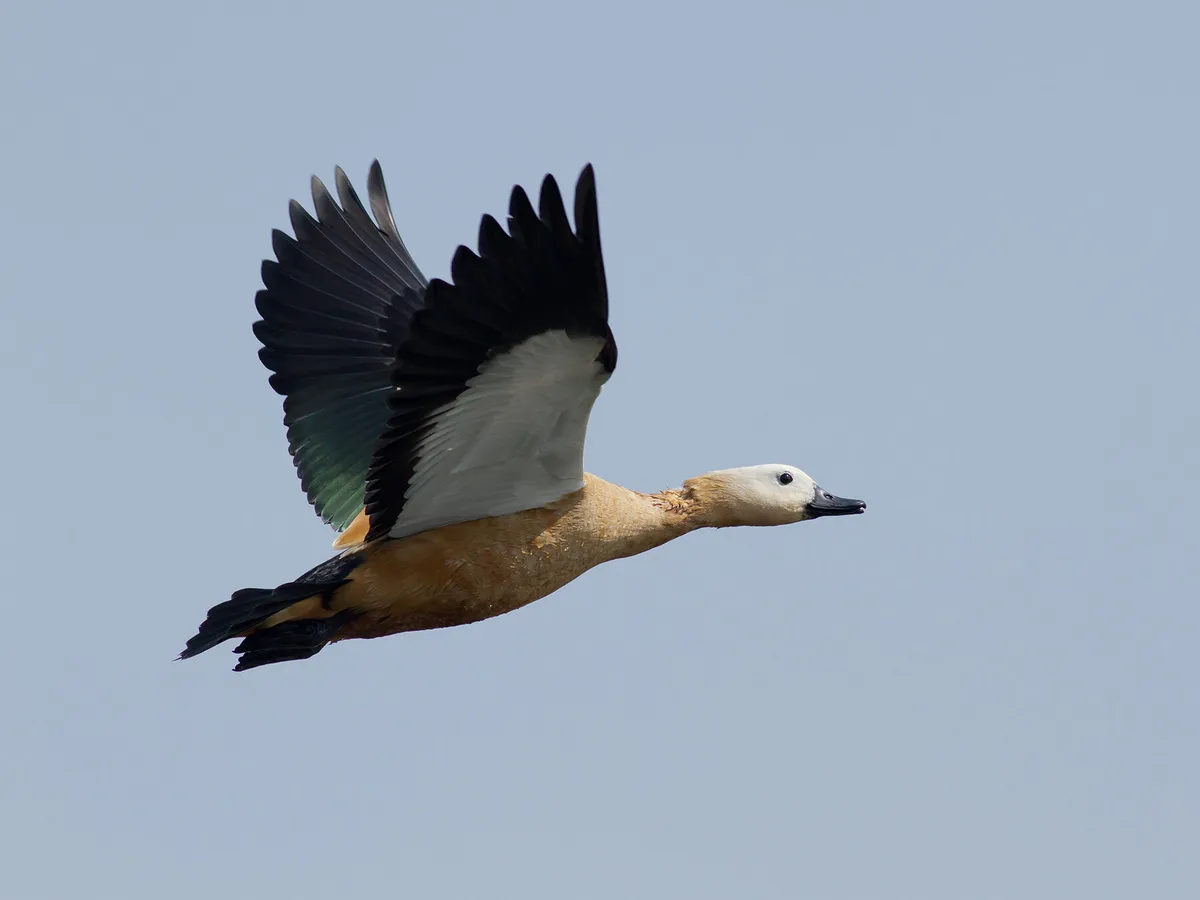
Ruddy Shelduck in flight
How fast can ducks fly?
Most ducks can reach about 40 to 60 miles per hour, with speeds averaging approximately 50 miles per hour. One of the fastest duck species is the eider that can reach speeds of 60 miles per hour. The Red-breasted Merganser holds the phonograph record for the fastest duck flying at a rate of 100 miles per hour and, when put into position, beats the global ‘s fastest land animal, the Cheetah that can reach speeds of up 70 miles per hour .
How far do ducks migrate?
Birds migrate to flee places when it becomes excessively cold for them or food is no longer abundant. Distances travelled during migration is not the same for all ducks. Some travel for thousands of miles, whilst others may take a at leisure trajectory travelling for around 100 miles. The Mallard flying can travel bang-up distances during migration, and records show them flying non-stop for 800 miles over eight hours. Records show a Northern Pintail completing a travel of 3,000 kilometers ( 1,864 miles ) non-stop whilst migrate. For more data on the migration of ducks, check out this article .
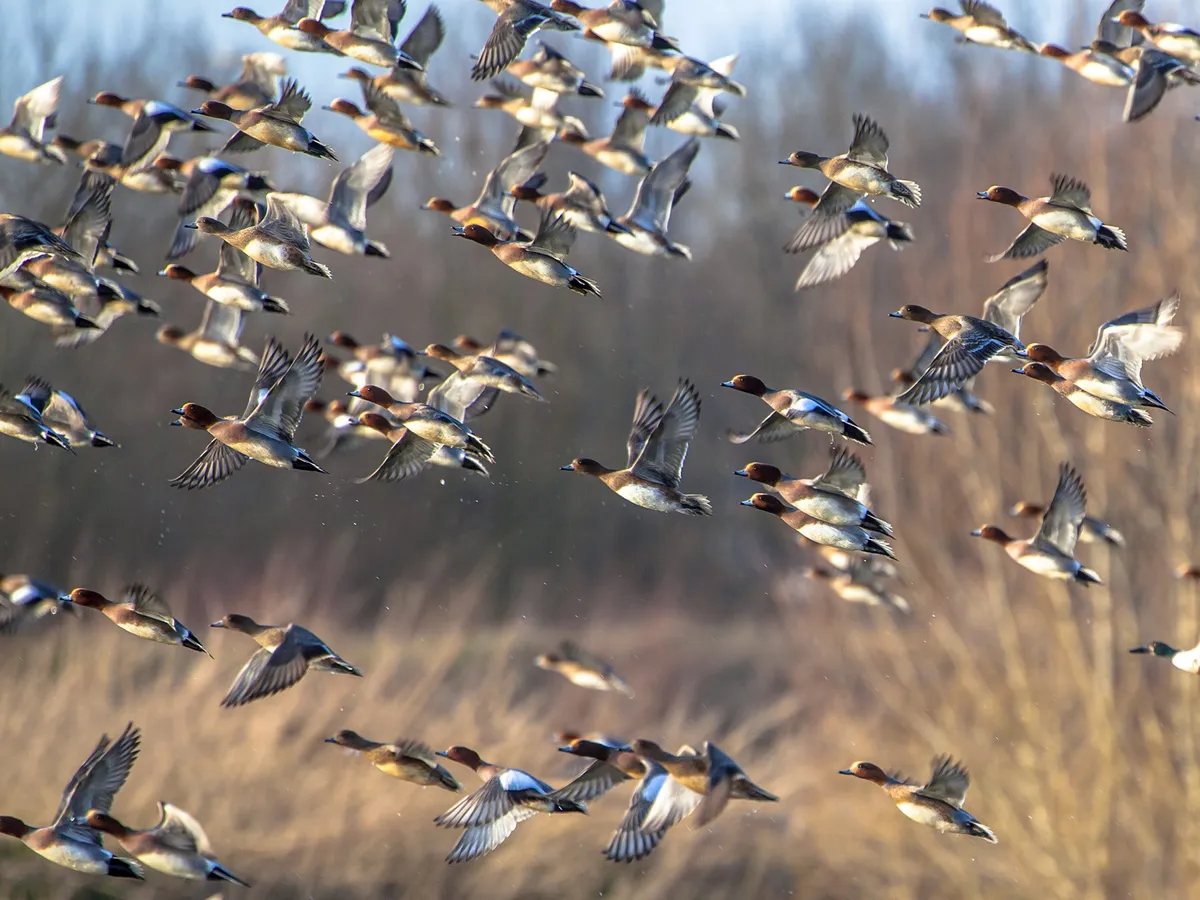
A flock of ducks migrating
Can ducks take off without water?
As we know, ducks can take off from water. many species can besides take off from land or ice – obviously, some more easily than others.
Read more : The 9 Woodpeckers of Wisconsin (Pictures)
But, have you ever watched a dive duck such as the Tufted duck, Pochard and Goosander, take off from body of water ? It ‘s quite a noteworthy sight watching as they run across the water, beating their wings quickly to gain enough speed for take-off. In contrast, dabbling ducks can take off from the water system quickly, efficiently and in an about vertical military position !

Tufted Duck taking off from the body of water
Do ducks fly at night?
Most waterfowl migration occurs at night, with movements intensifying not long after sunset, peaking in the center of the night, and dropping off after that. On the whole, many species are more active at night. They prefer to forage for food in dark, which can be ascribable to changing habitat conditions and avoiding predators .
Do ducks fly in the rain?
We ‘ve all learn of the british allege, “ cover girl upwind for ducks ”, but do our feather friends fly when it ‘s raining ? Well, yes indeed, ducks do fly in unhorse rain or winds .
Can ducks fly backwards?
Like most other birds, Ducks can only fly forwards, with the Hummingbird being an exception as they can fly backwards and top down .

male Mallard duck in flight
Do ducks fly in a formation?
It is common to see a flock of ducks flying in a V shape formation during migration. The birds can save energy and with less effort when flying in formation. The leader heads the group, with each boo flying slenderly above the one in presence. When flying in this formation, the time of wingbeats is essential. As each shuttlecock flaps, swirling air comes off its wingtips, and the up moving air generated helps each bird to conserve energy and take advantage of a release ride. The birds take it in turns to lead the group, as this helps to combat fatigue. At the beginning of the nest season, ducks can fly in what ‘s known as ‘three bird flights ‘. normally, this is an prove couple accompanied by a lone drake on the lookout for a female collaborator .
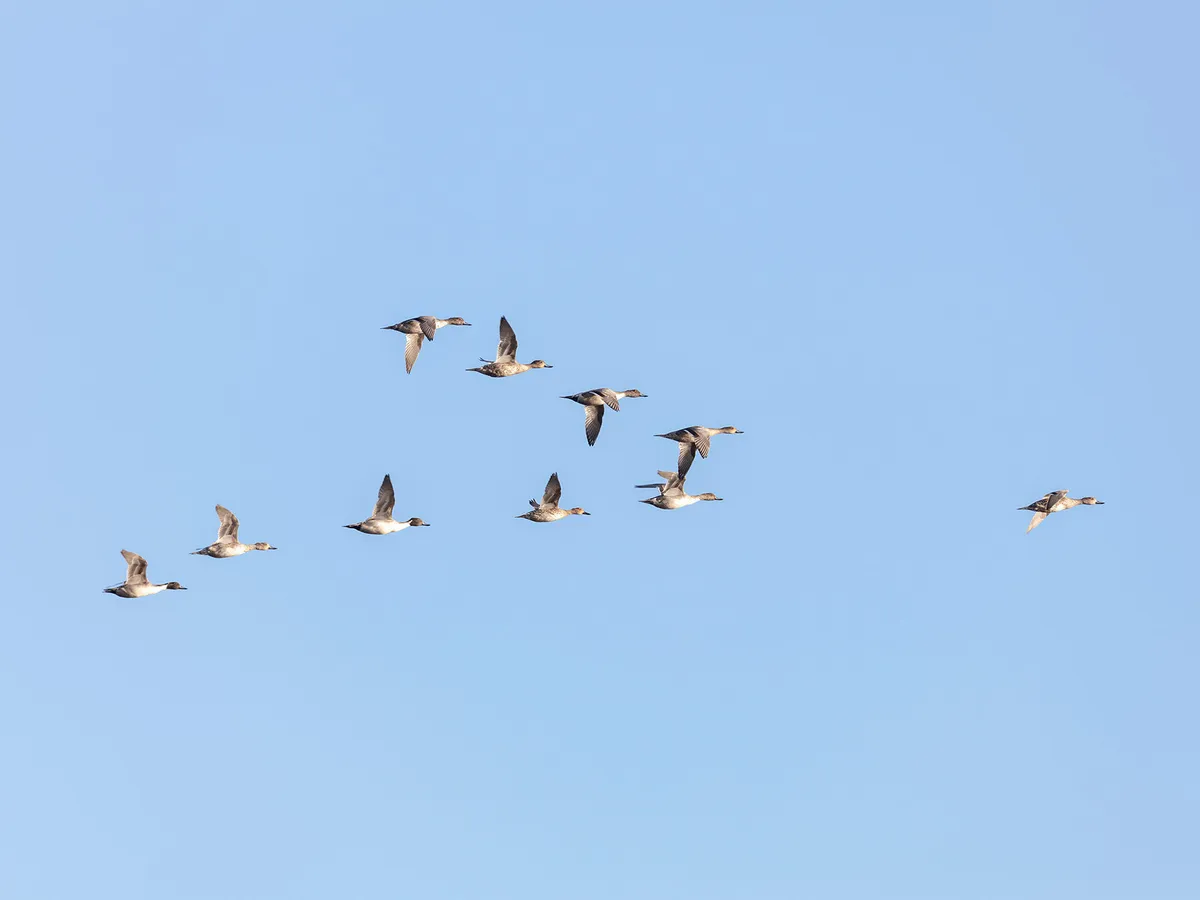
Northern Pintails flying in formation
Can baby ducks fly?
Baby ducks gain their independence and fledge between 50 – 60 days. Until such fourth dimension, they remain under the protection and supervision of their mother .
Can Mallard ducks fly?
With a wingspan of 75 to 100cm, Mallard ducks are competent fliers and can reach speeds of up to 55mph. Their wings are strong, pointed in shape, and slightly larger than those of diving ducks. They are able of taking off about vertically and directly from the water .
Can Runner ducks fly?
indian Runner ducks are a domestic breed derived from the Mallard duck. They are sometimes referred to as Penguin ducks due to their erect and bottle-shaped bodies, and their legs are pretty far second on their bodies, which allows them to run alternatively of waddle. indian Runner ducks can not fly but can jump 3 feet high fences if feeling under menace .
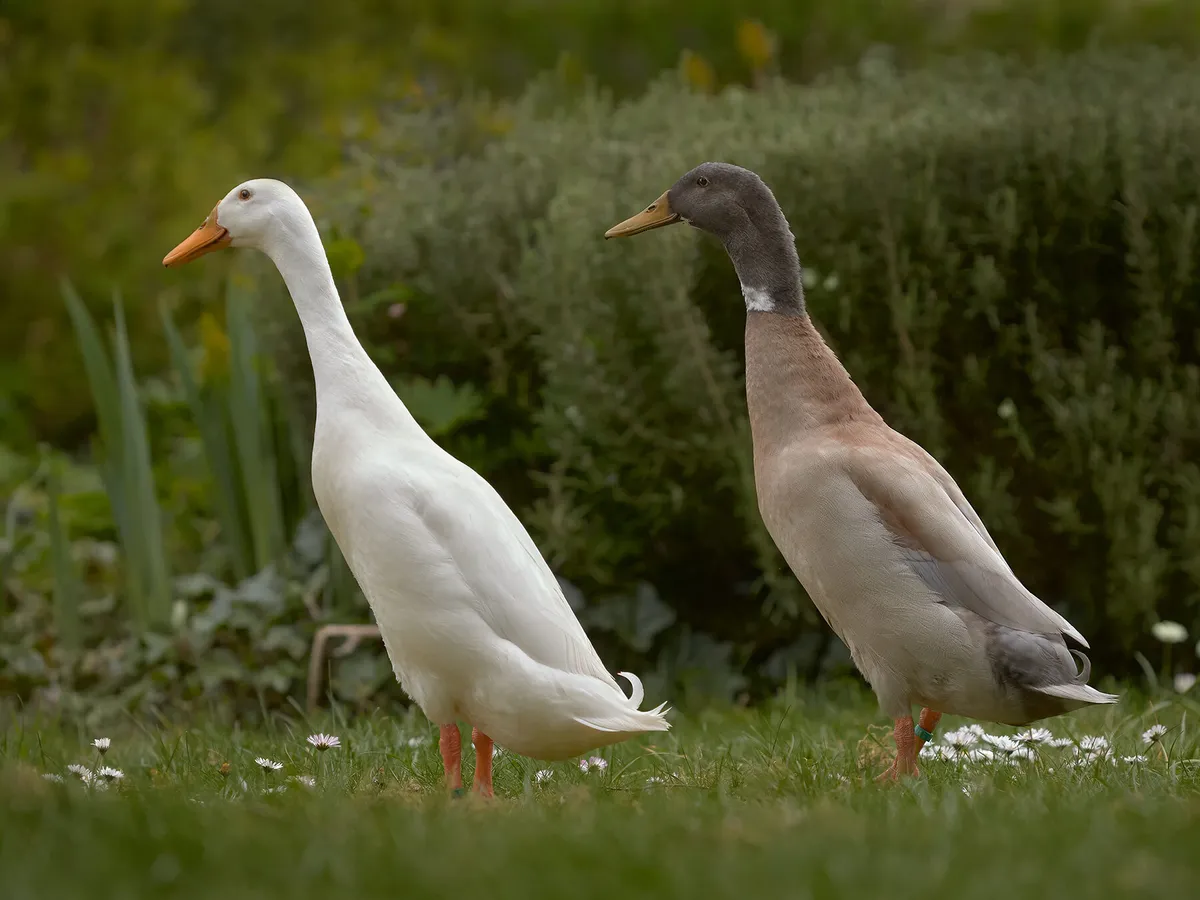
indian Runner ducks are not able to fly
Can Pekin ducks fly?
Pekins are large and intemperate birds that are relatively active and gregarious. They are a domestic breed originating from the Mallard hedge and classified as being flightless. however, lighter individual ducks may be able to take a short flight .
Can domestic ducks fly?
domestic ducks can not fly due to their body shape, weight and size. Derived from the Mallard except for the Muscovy hedge, domestic duck breeds include :
- Indian Runner Duck
- Khaki Campbell
- Pekin
- Rouen
- Cayuga
many domestic duck breeds make good pets and can be kept in secure environments like a garden or back yard. A small pond or paddling pool, if possible, is a dependable addition for them as they love to paddle and splash round in the water. domestic ducks have appeared in children ‘s storybooks and cartoons for many years, making them democratic and much-loved by many of us. One enormously popular white dip was Beatrix Potters Jemima Puddleduck, an Aylesbury hedge with a boastfully upright body, white feathers, a pink bill and orange legs and feet. other celebrated ducks include Walt Disney ‘s Donald Duck, his three nephews Huey, Dewey and Louie, his girlfriend Daisy, and his uncle Scrouge McDuck all of whom resemble the american Pekin duck. Daffy Duck, created by Warner Brothers, was another celebrated hedge and looked like the american black hedge.
Read more : Can Peacocks Fly? (All You Need To Know)
Expert Q + A
Ask a question
Do you have a question about this subject that we have n’t answered ? Submit it below, and one of our experts will answer vitamin a soon as they can .
Include your e-mail address to get a message when this question is answered .

I am broadly interested in how human activities influence the ability of wildlife to persist in the modified environments that we create.
Specifically, my research investigates how the configuration and composition of landscapes influence the movement and population dynamics of forest birds. Both natural and human-derived fragmenting of habitat can influence where birds settle, how they access the resources they need to survive and reproduce, and these factors in turn affect population demographics. Most recently, I have been studying the ability of individuals to move through and utilize forested areas which have been modified through timber harvest as they seek out resources for the breeding and postfledging phases. As well I am working in collaboration with Parks Canada scientists to examine in the influence of high density moose populations on forest bird communities in Gros Morne National Park. Many of my projects are conducted in collaboration or consultation with representatives of industry and government agencies, seeking to improve the management and sustainability of natural resource extraction.










